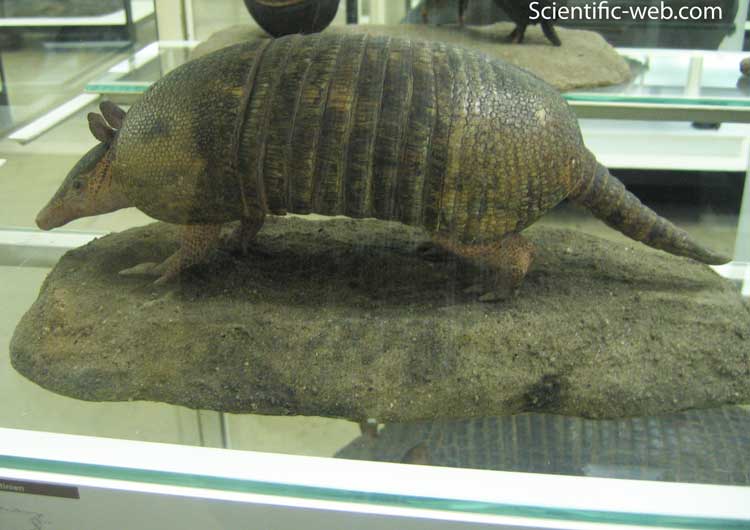Seven-banded Long-nosed Armadillo or just Seven-banded Armadillo, Dasypus septemcinctus, Photo: Michael Lahanas Cladus: Eukaryota Name Dasypus septemcinctus Linnaeus, 1758 Type locality: "Indiis", Pernambuco, Brazil (Hamlett, 1939) References * Dasypus septemcinctus on Mammal Species of the World. Vernacular names --------- Seven-banded Long-nosed Armadillo or just Seven-banded Armadillo, Dasypus septemcinctus, is a species of armadillo from South America. It is found in Colombia, Venezuela, Bolivia and Brazil. It's a solitary nocturnal and terrestrial animal, living, basically, in dry habitats, outside of rainforest regions. Description "'Long-nosed' Armadillos have a broad, depressed body, an obtusely-pointed rostrum, long, pointed ears and short legs." The carapace consists of two immobile plates, separated by 6 or 7 movable bands which are connected to each other by a fold of hairless skin. "The carapace is mostly blackish, hairless and with the scales of the anterior edge of the movable bands not notably different in colour from the rest of the dorsum. Lateral scutes have dark blackish-pink centres only slightly discernible from the rest of the carapace, but never as obviously pale as in Nine-banded. Scutes on the movable bands are triangular in shape, but those on the main plates are rounded. The number of scutes present on the fourth movable band varies from 44 to 52, with a mean of 48.4."[2] Reproduction Females give birth to 7 to 9 genetically identical offspring. [3] References 1. ^ IUCN SSC Edentate Specialist Group (2008). Dasypus septemcinctus. In: IUCN 2008. IUCN Red List of Threatened Species. Downloaded on 30 December 2008. * Arne å. Hammmmmons and Francois Feör, 1997 - Neotropical Rainforest Mammals, A Field Guide. Source: Wikispecies, Wikipedia: All text is available under the terms of the GNU Free Documentation License |
|


